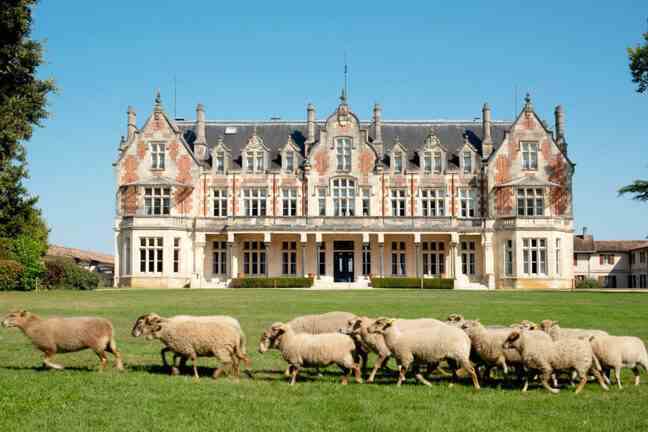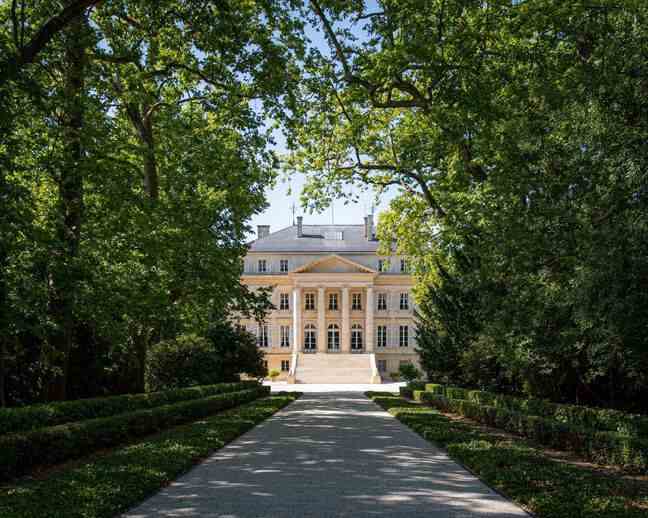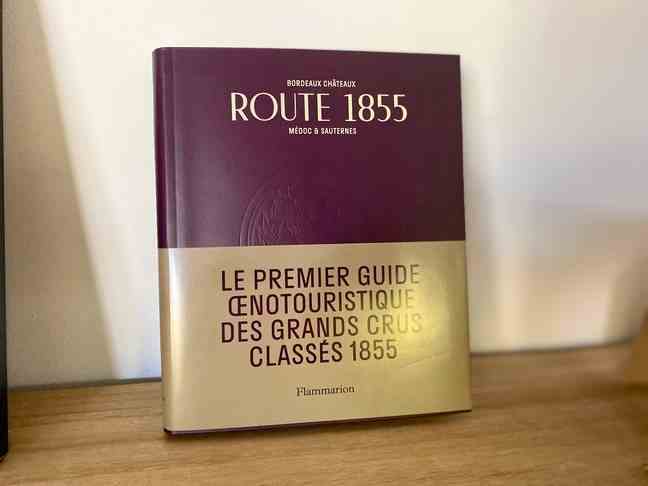Did you know that Château Talbot owes its name to the most famous English general of the Hundred Years War, John Talbot, who lost his life at the Battle of Castillon in 1453? That the astonishing pagodas of Château Cos d’Estournel were erected from 1830 by the founder of the estate, Louis Gaspard d’Estournel, nicknamed the Maharajah of Saint-Estèphe because of his passion for India, to which he exported his wine?
All these stories, and many more, you can learn during visits to these prestigious Bordeaux estates, which are increasingly open to wine tourism, which ranges from visits and tastings to restaurants and guest house.
To bring together the wine tourism offer of these Grands Crus Classés in Médoc and Sauternes, the Council of Grands Crus 1855 has just published a guide, Road 1855. “It’s a collective project, initiated by the union with the estates, explains Sylvain Boivert, director of the 1855 Grands Crus Classés Council. Even if we have been communicating for several years around this offer, we lacked a paper support, and we we left with the idea of a beautiful travel diary. »
Domains known around the world
Embellished with anecdotes and photos, the guide lists all the initiatives of the forty estates, out of the 87 classified 1855, which have opened up to wine tourism in recent years. Château Giscours thus offers a whole range, ranging from free visits to the park to private visits, including a picnic with local products and wine from the estate. Prieuré-Lichine, one of the estates that welcomes the most visitors, has one of the most extensive offers, which will delight history buffs, knowledgeable wine lovers and those who just want to spend a moment of relaxation. during a lunch on the grass. Prieuré-Lichine has even initiated discovery itineraries on electric bikes.

From Margaux to Sauternes, the estates classified 1855 are known throughout the world for their bottles, sometimes sold for several hundred or even several thousand euros for the rarest vintages. But wine tourism is also becoming an activity in its own right for these châteaux, which are sometimes embellished with sumptuous parks. “It has become more professional with dedicated teams, and today we earn money doing wine tourism, confirms Sylvain Boivert. In Sauternes, welcoming individuals has become a major source of profit, and this also allows the estates to win back consumers, especially since Yquem is open to the general public. This radiates throughout the area. »
4,000 people per year in Yquem
Yquem, certainly the most famous of the Grands Crus Classés 1855, opened to public visits in May 2016. offers a separate, suspended moment to people who wish to come to Yquem, alone, in pairs or with relatives, by offering different types of experience” explains Valérie Lailheugue, executive assistant and communication manager at Château Yquem.
This translates into three offers with a common core which includes the discovery of the Yquem house, its history, its architecture, its terroir and its cellars… “Then we come to the moment of tasting, with three possibilities: the discovery tasting with a recent vintage (2017) at 84 euros, the anthology with two vintages (2005 and 2015) at 150 euros and the trilogy (with tasting of the 2005, 2009 and 2017 vintages) at 300 euros per person”, explains Valérie Lailheugue, who specifies that “these vintages change according to stocks, since the particularity of Sauternes wines is to have very limited yields. »
Six visits per day are offered in high season, and three the rest of the year. “We are full for the next few weeks, warns the communications manager, and some dates are even taken by storm six months in advance. Yquem now welcomes around 4,000 people a year.
“No question of it becoming the factory”
“We are incredibly lucky to benefit from a fabulous architectural diversity, and almost all the cellars have been redone recently, we can spend time there”, observes Sylvain Boivert. An architecture with multiple influences that attracts visitors from all over the world.
This territory, synonymous with excellence, is not going to turn into a tourist park with a parade of coaches on the wine route. Although the famous Château Margaux has been organizing tours and tastings since the end of the 1970s, “there is no question of it becoming the factory”, warns Johana Loubet, head of external relations at Margaux.
“We are keen to share the magic of our property, to talk about our wine, but in a reasoned way,” she continues. We have a lot of requests, but only two hostesses for the visits, and for the moment we prefer that it stays that way to favor quality visits. So we make appointments according to our availability, and preferably in the months of November to March, and in June-July. »
“These great wines must not remain in the realm of the imagination”
Built in 1815 (even if the estate has existed since the Middle Ages), Château Margaux is one of the very few neo-Palladian style estates in France, which was completed in 2015 by a cellar designed by the star architect Norman Foster.

The experience at Margaux begins with a presentation around a model of the property, a visit to the Foster cellar and the various vats, the cooperage, and the vinotheque. “All of these visits are followed by a tasting,” emphasizes Johana Loubet, who adds that “the public can also come and walk around the property without an appointment, which already offers an enriching experience. »
For the president of 1855, Philippe Castéja, “the opening of our estates to the general public represents the future, because people want to see, and these great wines must not remain only in the realm of the imagination, they it has to be tangible. And that can start by taking in hand the very successful Road 1855.

Route 1855, the first wine tourism guide to the Grands Crus Classés 1855, Flammarion editions, 26 euros.

